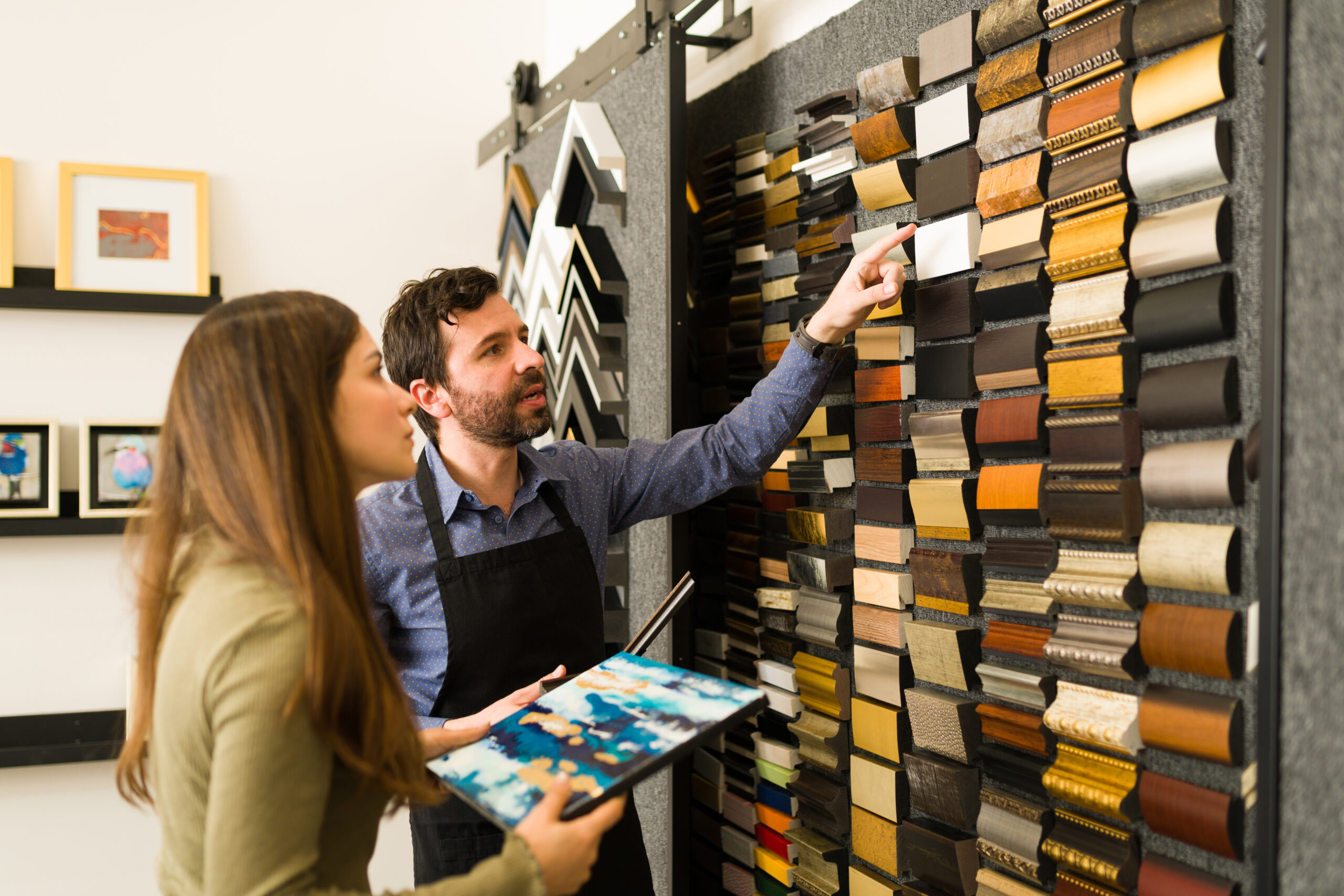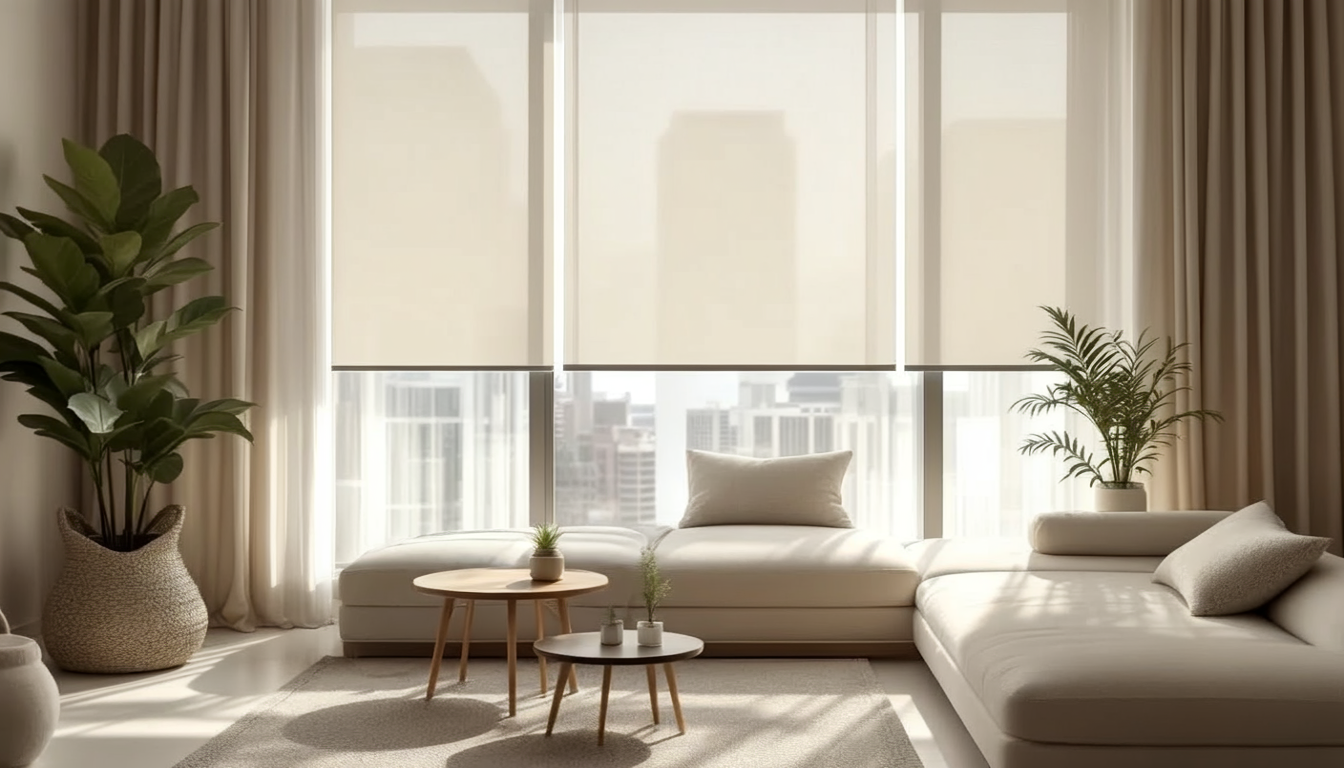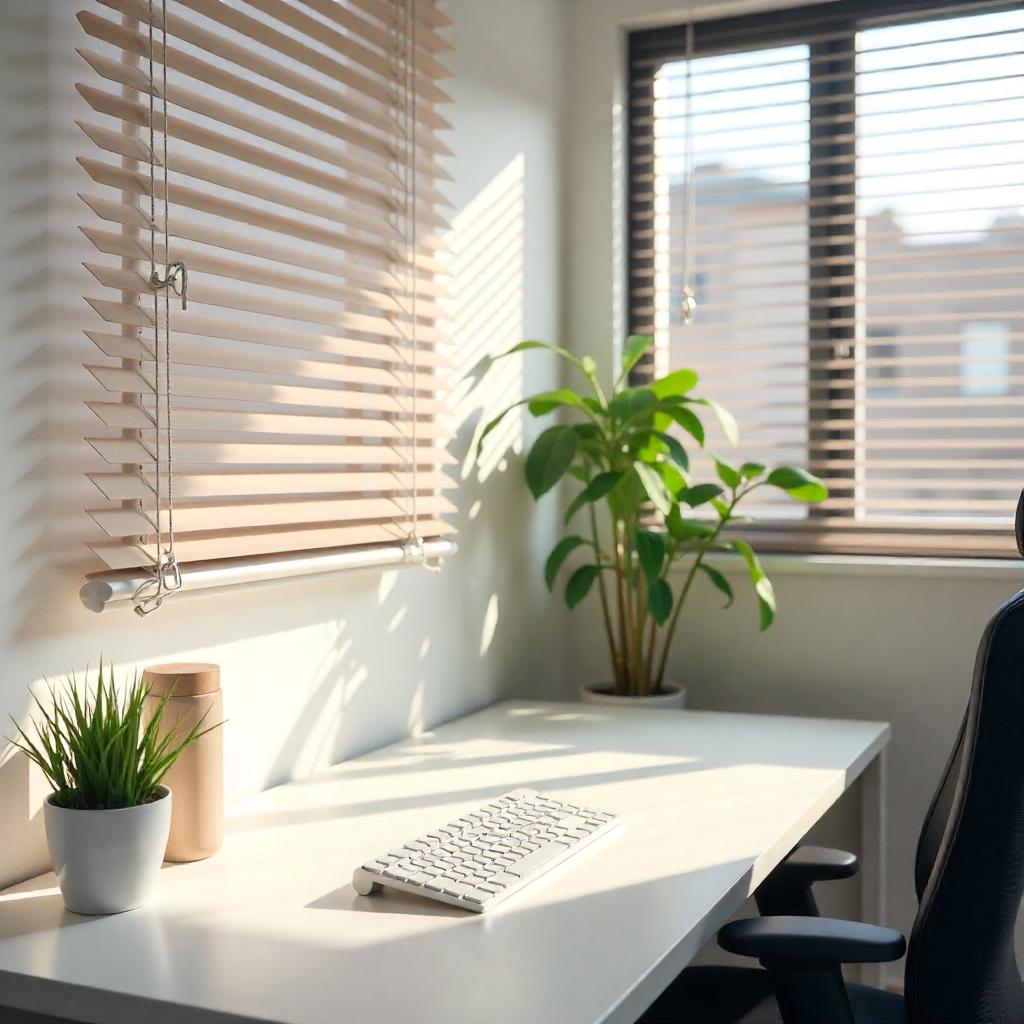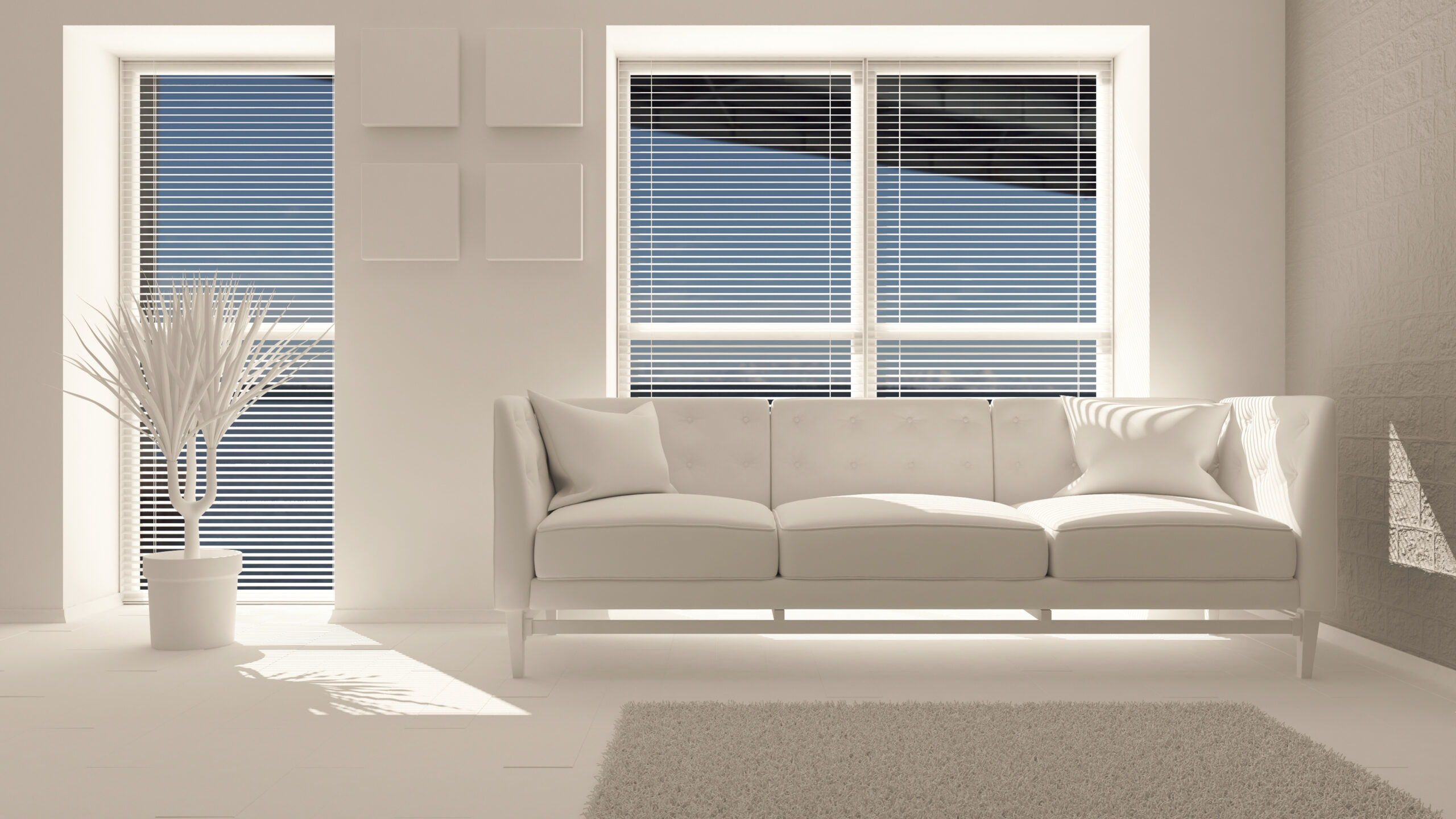The Best Materials for Automated Blinds: Which Is Right for Your Home?
When it comes to window treatments, automated blinds have quickly become a popular choice for homeowners looking to combine convenience, energy efficiency, and modern aesthetics. These smart blinds can be controlled remotely, either by a smartphone app or a voice assistant, offering a new level of comfort and functionality. But with so many material options available, it can be overwhelming to decide which is best for your home. In this blog, we’ll explore some of the top materials for automated blinds, highlighting their advantages and helping you make an informed choice.
1. Aluminum Blinds
Best for: Modern, sleek, and minimalistic interiors
Aluminum blinds are a classic choice for automated window treatments due to their versatility and durability. The material is lightweight yet strong, and its smooth, reflective surface is great for controlling light and heat. Aluminum is often used for Venetian-style blinds, which feature horizontal slats that can be tilted to adjust the amount of sunlight entering a room.
Pros:
- Durability: Aluminum is resistant to warping, fading, and discoloration.
- Energy Efficiency: The reflective surface helps bounce sunlight away from the room, keeping interiors cooler during hot months.
- Easy Maintenance: Aluminum blinds are easy to clean and maintain, requiring only occasional dusting or wiping.
- Variety: Available in a range of colors and finishes, aluminum blinds can complement various interior styles.
Cons:
- Noise: Aluminum can be noisy when adjusted, especially if the blinds are in direct sunlight or wind.
- Limited Insulation: While aluminum is great at reflecting heat, it doesn’t provide much insulation compared to other materials.
2. Wood Blinds
Best for: Traditional, rustic, or warm home decor
Wooden blinds exude a timeless charm and offer a natural, earthy look that suits traditional, rustic, or farmhouse-style interiors. These blinds are often used in a slatted design, and they can be operated automatically for enhanced convenience. The wood provides an elegant finish and can be stained or painted to match your home’s color scheme.
Pros:
- Aesthetic Appeal: Wood brings warmth and sophistication to any room.
- Insulation: Wood is a natural insulator, helping to keep your home warmer in winter and cooler in summer.
- Sustainability: If you choose sustainably sourced wood, these blinds are an eco-friendly option.
- Customization: Wooden blinds can be customized in terms of slat width, color, and finish.
Cons:
- Weight: Wood is heavier than materials like aluminum or vinyl, which might affect the operation of automated systems.
- Maintenance: Wooden blinds require more maintenance, such as occasional cleaning and refinishing to maintain their appearance.
- Price: Wood blinds tend to be more expensive than other materials, especially if made from high-quality hardwoods.
3. Faux Wood Blinds
Best for: Homeowners seeking the look of wood with less maintenance
Faux wood blinds are an excellent alternative to natural wood, providing a similar aesthetic but with added durability and lower cost. Made from composite materials or PVC, faux wood is designed to mimic the appearance of real wood, but without the drawbacks. They are particularly suitable for high-humidity areas like kitchens and bathrooms, where real wood might warp or fade.
Pros:
- Cost-Effective: Faux wood blinds are typically more affordable than genuine wood blinds.
- Durability: Unlike natural wood, faux wood doesn’t warp, crack, or fade when exposed to humidity.
- Easy Maintenance: Faux wood is easy to clean and maintain, making it a low-effort option for homeowners.
- Energy Efficiency: Faux wood offers good insulation properties and can help regulate indoor temperatures.
Cons:
- Heavier than Aluminum: Faux wood can be a bit heavier than aluminum, though lighter than solid wood.
- Less Authentic Look: While faux wood looks similar to real wood, it can still lack the natural texture and feel of genuine wood.
4. Fabric Blinds
Best for: Soft, elegant aesthetics with light control
Fabric blinds come in a wide variety of materials, such as polyester, cotton, linen, and velvet. These can be either roller blinds or Roman shades, both of which can be automated for ease of use. Fabric blinds are ideal if you’re looking to add a touch of elegance and softness to your home while also achieving light control.
Pros:
- Soft Aesthetic: Fabric blinds create a softer, more inviting atmosphere, ideal for bedrooms and living rooms.
- Light Control: Depending on the type of fabric and weave, these blinds can offer a range of light-filtering options from sheer to blackout.
- Variety: Fabric blinds come in countless colors, patterns, and textures, offering more customization than other materials.
- Noise Reduction: Fabric can help reduce sound, making it an ideal choice for rooms where you want to create a quieter environment.
Cons:
- Maintenance: Fabric blinds are prone to dust accumulation and require regular cleaning or vacuuming.
- Durability: Fabric is more susceptible to wear and tear over time, especially in high-traffic areas.
- Less Energy Efficient: Fabric doesn’t offer the same insulation properties as materials like wood or faux wood.
5. Cellular (Honeycomb) Shades
Best for: Maximizing energy efficiency and insulation
Cellular or honeycomb shades are an innovative option for automated blinds, known for their unique structure. These shades have a series of air pockets that trap heat or cool air, making them an excellent choice for improving your home’s energy efficiency. Cellular shades come in both light-filtering and blackout styles, making them versatile for various room types.
Pros:
- Energy Efficiency: The honeycomb structure provides excellent insulation, helping to regulate indoor temperatures and reduce energy costs.
- Soundproofing: Cellular shades offer sound-dampening qualities, which is great for rooms that need extra noise reduction.
- Customizable: Available in a range of colors, textures, and opacities, these shades can fit any room decor.
- Compact Design: When raised, cellular shades stack compactly, making them ideal for rooms with limited space.
Cons:
- Price: Cellular shades can be more expensive than basic fabric or aluminum blinds.
- Cleaning: The honeycomb structure can trap dust, requiring careful cleaning to maintain their appearance.
6. Solar Shades
Best for: Glare reduction and UV protection
Solar shades are made from a special fabric that reduces glare and blocks harmful UV rays while still allowing for a view of the outside. These shades are perfect for rooms with large windows or areas that receive a lot of sunlight. They can be automated for easy control of sunlight and privacy.
Pros:
- UV Protection: Solar shades help protect furniture, flooring, and artwork from sun damage.
- Light Control: While they block out UV rays and glare, solar shades still allow for some natural light to filter through.
- Energy Efficiency: By reducing the amount of direct sunlight entering a room, solar shades can help maintain a cooler indoor temperature.
- Variety: Available in various densities and finishes, solar shades can suit different design preferences.
Cons:
- Privacy: Solar shades can offer limited privacy at night since they remain somewhat transparent.
- Less Insulation: While they are great for blocking heat from the sun, solar shades do not provide as much insulation as other options like cellular shades or wood.
Conclusion
Choosing the right material for your automated blinds is key to meeting your needs, style, and functionality. At Floyd’s Blinds & Curtains, we offer durable and low-maintenance options like aluminum and faux wood, along with stylish and comfortable fabric and cellular shades. Wood blinds provide timeless beauty and excellent insulation, perfect for traditional spaces. No matter the material, adding automation to your window treatments will enhance your home’s functionality, providing a modern, tech-savvy upgrade to your living space.






